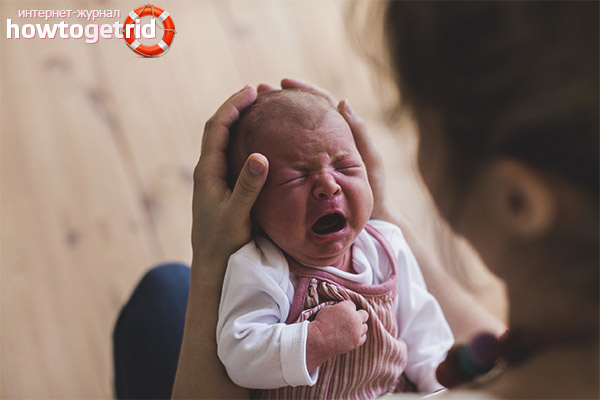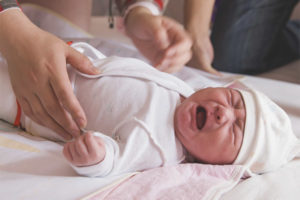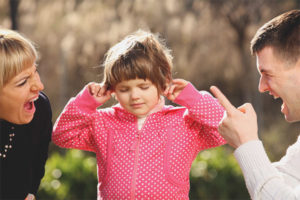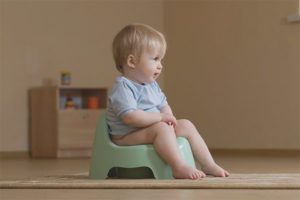The content of the article
At the beginning of a child’s life, the prevailing cause of illness and even disability is head trauma. Sometimes it ends with the death of a child. Often this leads to the fact that parents and their baby are treated carelessly or even cruelly. A situation is completely optional when the baby has to fall and hit his head hard. Sometimes a baby is just enough to shake to damage the brain. In 20% of cases, death occurs, the rest significantly injure their nervous system.
The concept of shaken baby syndrome (SVR)
For some reason, this problem does not find a frequent and broad description in the literature. Only a few authors turn to it. This name is not the only one. This condition is called differently. Some, for example, call it a child's traumatic shaking syndrome.
The problem is insidious in that the child does not show traumatic injuries on the body. They are inside and fraught with unpleasant consequences. A certain imprint is imposed by the complexity of the diagnosis, which determines the delay in providing the necessary assistance. With strong shaking, the baby's head makes movements of a different nature. SVR is characterized by the classical triad:
- Blood pours out into the skull.
- The brain swells.
- Spilling blood into the retina.
The main causes of this condition
Shaking children is carried out by parents or those who care for the baby. Some cases are clearly violent. Most of them are committed by fathers. It is no secret that all parents have a different level of education and development. Some of them may even have mental disorders. Sometimes parents themselves act like children. Persons with severe impulsiveness and single parents can occur. They are completely unaware that even shaking the child slightly can result in injury. Sometimes they can start shaking a child while in a state of affect. It is necessary to consider in more detail the reasons why the child is shaken.
It is characteristic that in the risk group, first of all, are the boys of the first 6 months of life. This also includes premature babies and those who had various disorders during fetal development. It is possible that children with a certain natural temperament are at risk. Naturally, this group will include children with various congenital pathologies, which is due to the addiction of a sorrow mother to alcohol or drugs. A certain imprint on the birth of such people can be caused by smoking of the mother while bearing the fetus.
The reason may be that with the birth of the baby in the family, the usual way of life changes. Parents, especially mothers, have chronic lack of sleep.You can not ignore the fact that often with the advent of the baby in the family, the financial situation worsens. In general, relations between family members are heating up, which, of course, is reflected in the baby. Simply put, a stressful situation arises in the family, and the result is that violent emotions are splashed out on the child.
Predisposition of infants
The baby at birth has a clear imbalance of parts of his body. The largest of these is the head. If in an adult, it is only 3% of the body, then in babies this figure approaches 15%. The skull is a kind of brain protection. But it is still soft, since the processes of ossification in it are not completed. Complete closure of the large fontanel has not yet occurred, and other bones have not fully grown together. The neck muscles also have weakness. The articular surfaces of the vertebrae have not yet become stronger.
This makes the head extremely mobile. Myelination of nerve fibers has not yet occurred enough, and the brain contains a lot of fluid. At the moment of shaking, various forces can act on the brain. This can lead to injuries of the cerebral vessels, which causes hemorrhages of varying severity.
Note! When a child is shaken, not only the brain, but also the spinal cord is exposed, and the problem itself lies in the complexity of the diagnosis.
How does SVR arise
According to research, the average duration of shaking is 20 seconds. For such an insignificant time, the head makes oscillatory movements in an amount up to 50 times. This may result in hazardous damage. The result will be more deplorable if an additional header will take place (for example, a hit on the changing table). Shaking a baby can be compared to a car accident.
A child may fall from the couch. Practice shows that at a height of less than 1.25 meters, injuries, as a rule, are not very severe.
SVR injury structure
If the child is well shaken, he is able to receive a number of rather serious injuries. They can be represented as follows:
- Subdural space hemorrhage (KDK). This area is limited by the dura and arachnoid meninges. It occurs when the superficial veins of the brain rupture. The process can be one-sided or two-way.
- Subarachnoid space hemorrhage (SAC). It is an area that is limited by the soft and arachnoid membrane of the brain. The mechanism of occurrence is identical to the previous version.
- Diffuse axon damage. When shaking, a long nerve fiber breaks. Of course, this partially or completely stops the transmission of nerve impulses.
- Increased pressure in the cranial cavity. This condition will certainly occur with untimely assistance.
- Blood pours into the retina. This is the most common symptom in cases of violent head injury. Localization can be bilateral or the process is observed only on one side. This condition is distinguished by pronounced vastness. If the cause of hemorrhage in the retina is SVR, then one can observe the expressed specificity of the process. It differs significantly from similar conditions associated with another etiology. Often this can occur with an infectious process or a birth injury to the head.
- Rib fractures. They are possible if you squeeze the baby’s chest strongly. Often the place of their localization is the back surface on the left. If the fractures are due to other reasons, then they have a slightly different location.
Clinic
Symptoms can be very different in nature and are determined by the type of brain damage. The severity of manifestations can also be different in its intensity.
Objectively, pupils of different diameters, the child cannot raise his head, there is no possibility of focusing the gaze. If convulsions are observed, the child loses consciousness, respiratory function is disrupted, and the skin becomes blue, this indicates a pronounced seriousness of the violations. They are heavy. Sometimes after a child is shocked, he may fall asleep. Parents begin to frighten his low activity. They again begin to shake him, which only exacerbates the situation.
SVR can have long-term consequences. These include the occurrence of paralysis, hearing loss, blindness. A child can become simply mentally retarded. In the future, problems arise in terms of training. Children begin to complain of poor memory. They may well have epileptic seizures. The most adverse outcome is death.
Establishing diagnosis
First of all, this is a thorough history taking. Parents need to inquire in detail about what happened. Of course, inspection data and objective evidence are taken into account. Great help in making a diagnosis is provided by instrumental methods of research:
- CT scan. With the help of it, the nature of the damage is clarified, its vastness, localization. Signs of cerebral edema can be detected.
- Magnetic resonance imaging. It is a less sensitive method, but serves as a good complement to CT.
- NSG (neurosonography). Its implementation is possible only if the child has a large fontanel.
- X-ray Using this method, bone fractures can be recognized.
The neurologist also involves other specialists in making the diagnosis. For example, if blood is poured into the retina, you will need the help of an ophthalmologist.
Help before the ambulance arrives
At the slightest suspicion of the occurrence of such a condition, you must immediately call an ambulance. If the child has a cardiac arrest, an indirect massage is necessary. It is good if all his parents will be trained in his techniques. In order for the baby not to be choked with aspiration waters, it should be laid on its side.
After the child is delivered to a medical institution, he will be provided with comprehensive medical assistance with the involvement of a wide range of specialized specialists.
Video: shaken baby syndrome












Submit